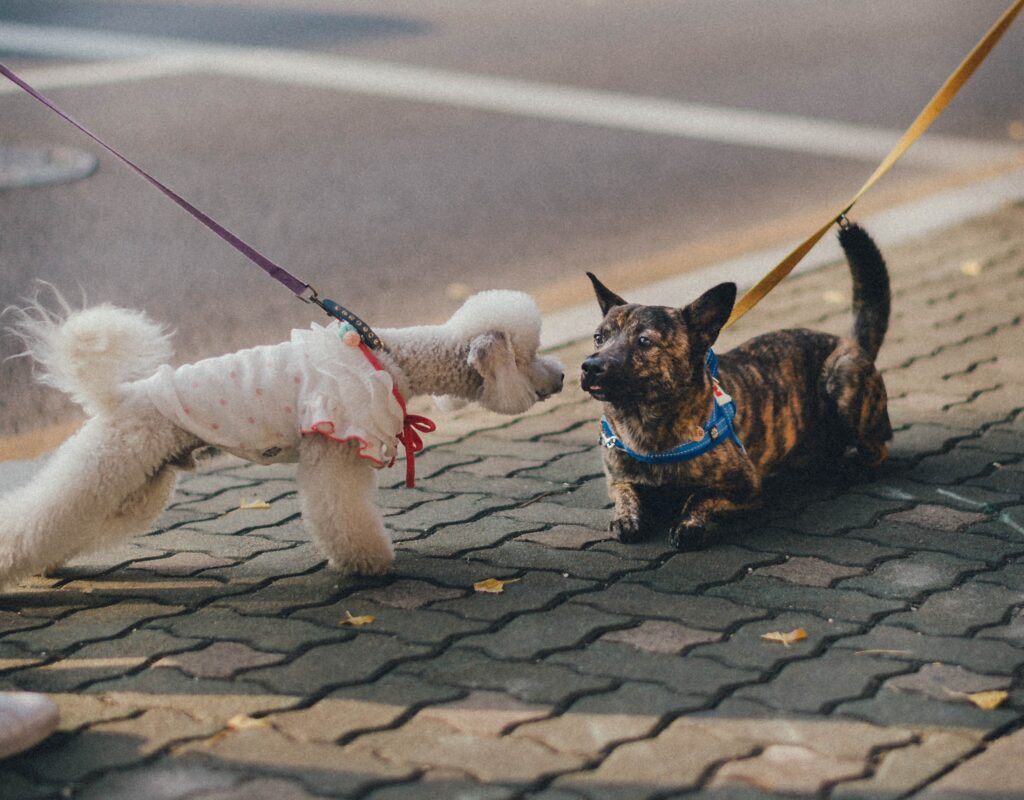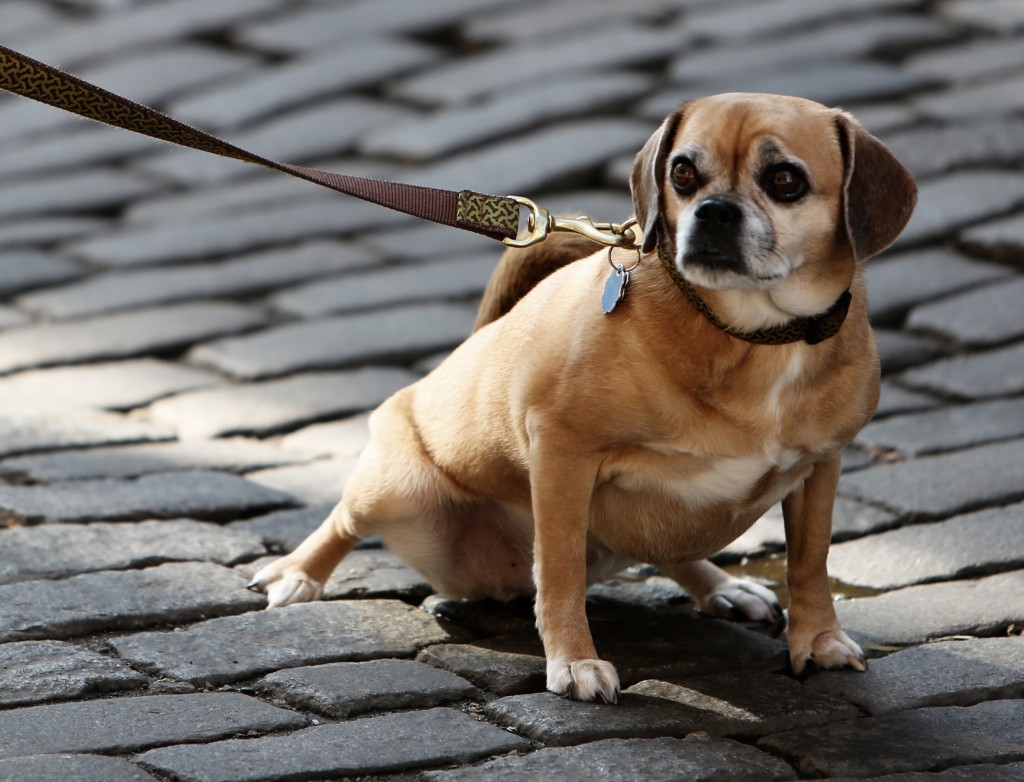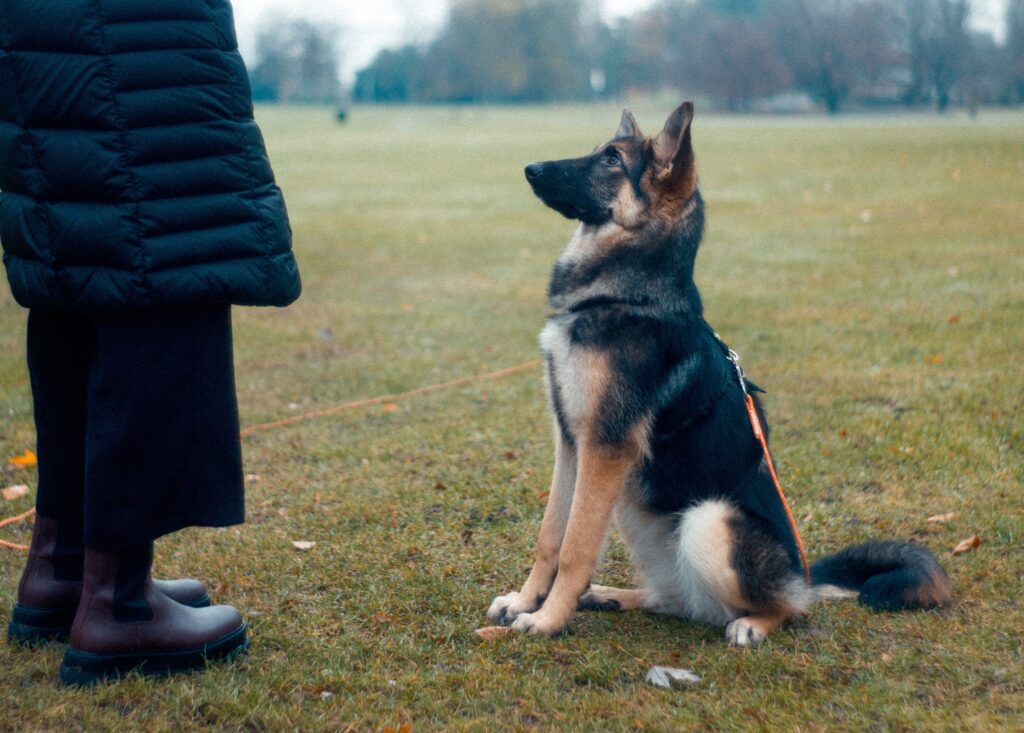Get an awesome recall. Join my 30 day, step by step program now...
Top Common Dog Training Mistakes
Here’s my top common dog training mistakes. I see these loads, so don’t feel bad if you are doing any. But, now you know, you can avoid them in the future!
Picking up a dog to meet others
A dog uses his entire body to communicate. This doesn’t just mean his teeth, ears and eyes, but his whole stance. This includes his tail, muscle tension, and even where he stands and the angle he stands at. When you pick him up, he isn’t able to show any of that and that will make him very anxious. It’s the dog equivalent of someone holding their hand over your mouth.
How can I help you with your dogs behaviour training?
Private Dog Behaviour Consultations are currently available online and in-person in Dundee and the surrounding area. If you are looking for help solving your dogs behaviour and training problems, please get in touch!
Using a clicker as a remote control!
Your clicker marks the behaviour that you want to encourage and promises a reward later – a bit like a IOU. Imagine yourself saying “keep doing that” every time you click and it’ll all make more sense. If your dog does come back to you when you click, you have taught the click as part of a recall command. That’s ok, but it won’t work as a clicker after that.
Letting your dog meet other dogs on a tight lead
The tight lead adds tension which can cause reactive behaviour, plus it increases your dogs levels of frustration and forces him to strain towards the other dog. It also encourages rude greetings as the dogs are forced to meet eye to eye! To an anxious dog this stance could look quite threatening. Instead, stand beside your dog, let the lead hang loosely, and them meet in a relaxed and natural way.

Relaxing the training too quickly
It takes 30 days to form a habit. So once you feel like you’ve cracked something new with your dog, keep going with your training for at least another month to make it a habit. If you don’t, your dog will slip back to old habits.
Changing the rules
Sometimes letting your dog finish your dinner, or sometimes letting him jump up, or suddenly changing the value of the reward are common examples of this. Changing the rules can be frustrating for your dog, which can cause reactive behaviour, or exacerbate other behavioural issues.
Using an extendable lead
An extendable lead needs the dog to pull against the lead in order to lengthen it and gain freedom, so he quickly learns that pulling on the lead is a good thing. It also causes frustration as sometimes we lock the lead so he can’t pull on it.
Forcing an anxious dog towards something they are scared of
Not only does carrying or dragging a dog to an object of fear not help with their anxiety, but it can also affect your trust bond. People are no different, I wouldn’t trust anyone that forced me into uncomfortable situations knowing I was afraid.

Letting your dog off the lead before you even arrive at the front door
The first and last 10 minutes of every walk are the most important. The first 10 minutes set the tone for the walk, and the last 10 minutes set you up for the next walk and his behaviour when you get in. Keep him calm, and don’t let him make too many decisions during these moments.
Using “tips” to solve behaviour problems!
Behaviour problems come with underlying problems and related behaviours. Tips won’t address any of that. At best, your success will be short lived. At worst, you’ll end up with a confused, frustrated or anxious dog that will be harder to train in the future.
Punishing an unwanted behaviour
Punishing a dog for an unwanted behaviour will either make a problem worse, or it will force it to be supressed. When this happens it often re-emerges as something else later on. Any dog that has reacted in an unexpected way to a trigger or has shown “unprovoked” aggression has almost certainly been punished for something at some point in the past.
Using a treat to help an anxious dog!
When a dog is in fight or flight mode their digestion process is actually switched off. This means they will have no interest in eating, or relaxing, for that matter. So food will not help until the anxiety is reduced, and neither will asking them to settle or lie down.
Adding extra steps
Adding a sit, paw or whatever to an existing trick and only rewarding one of the behaviours can lead to inconsistent results. For example, asking a dog to sit when they recall to you means that the recall got ignored but the sit got rewarded. Your recall will get worse and worse, but you’ll have a first class sit!

Improve your recall with my 30 day programme
Returning the toy after it has been won by another!
If you have two dogs, and one likes to steal the other dogs stuff, it might be tempting to give it back after it has been taken. This might feel like you’re righting a wrong, and keeping things fair. But it is actually very confusing for both dogs. Not only could this cause a serious fight as the “loser” might suddenly appear very cheeky to the “winner” for having something he shouldn’t. But, you could also accidentally demoralise the “winner”, you could cause anxiety to the “loser” who doesn’t want any bother and you could encourage resource guarding from the “winner” as he attempts to stop you from interfering!!
Using slow feeders at meal times
Slow feeders are great for enriching play time and challenging your dogs mind. But they can cause frustration when used at meal times. The drama should naturally come with the catching of the food. Once the foods been “caught”, the body naturally needs to calm down to a rest state so they can enjoy their meal and digest it. Slow feeders prevent that from happening until after the meal has gone. This frustration can unbalance your dog and leave them susceptible to many other behavioural issues, but especially reactive behaviour and extreme mouthing.
What would you add to this list?
How can I help you with your dogs behaviour training?
Private Dog Behaviour Consultations are currently available online and in-person in Dundee and the surrounding area. If you are looking for help solving your dogs behaviour and training problems, please get in touch!
How can I help you with your dogs behaviour training?
Private Dog Behaviour Consultations are currently available online and in-person in Dundee and the surrounding area. If you are looking for help solving your dogs behaviour and training problems, please get in touch!


